





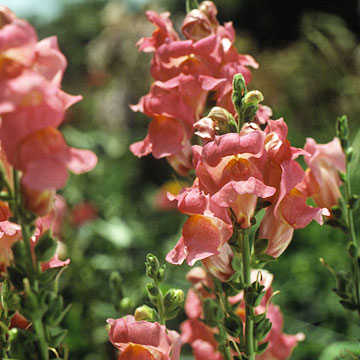
Lush flowerbeds overflowing with colorful blooms makes you want to snip a few stems and take them inside. But you may be reluctant to plunder your garden, afraid you'll leave bare spots. With a cutting garden, you can produce plenty of cuttable flowers without destroying the look and style of your garden.
Here's how to set up a cutting garden:
1. Choose a location. With a designated cutting bed, you can plant and cut without worry. Select an inconspicuous location -- along a garage or in a back corner of your yard -- and be sure your cutting bed benefits from lots of sun and rich, well-drained soil, just like your other beds. A cutting bed offers plenty of planting freedom. Its sole purpose is to produce flowers for you to cut, so don't worry about how it will look. You can mix and match colors, textures, heights, and varieties. Plant all your favorites.
2. Keep it simple. Make the bed simple to weed, feed, and cut by planting the flowers in rows. You might even make your cutting garden part of an existing vegetable or herb garden. The crop-style planting will blend right in, and your "production" gardens will be in one location. If you don't have gardening space to spare, spread cutting flowers throughout your existing beds; don't cluster them.
Learn how to combine annuals in a pretty flower border.
continue reading below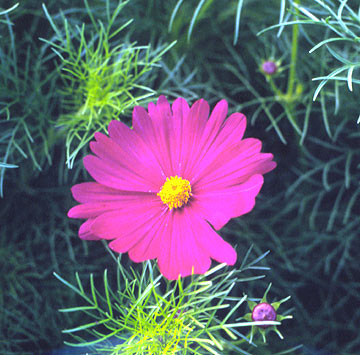 Cosmos are easy to grow from seeds or from transplants. Their feathery foliage is as pretty as their flowers.
Cosmos are easy to grow from seeds or from transplants. Their feathery foliage is as pretty as their flowers.
3. Mix and match. Plant a balanced mix of perennials and annuals. Your favorite perennials will come back year after year, while annuals will let you experiment. Both types make excellents cut flowers. The more colors, heights, and textures you grow, the more fun you can have creating indoor arrangements.
4. Don't limit yourself. Use flowering hedges, aromatic herbs, vines, and plants with interesting foliage to add pizzazz to your arrangements.
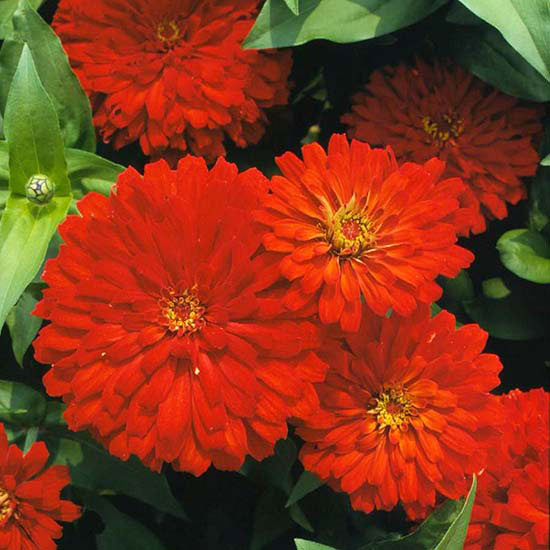
1. Stagger your planting of each flower variety so the blooms don't all appear and disappear at once.
2. To get the most blooms, water, feed, and deadhead flowers regularly.
3. Cut flowers in the early morning or evening, not in the heat of the day when they are stressed.
Related article: Great Annuals for Your Garden
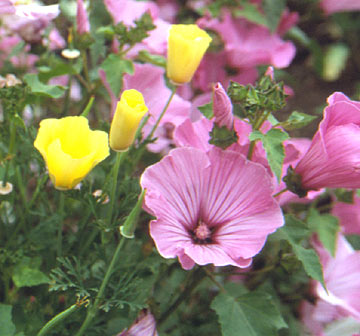 With its tall flower spikes,
lavatera resembles hollyhock and
produces many blooms with
interesting vein patterns.
With its tall flower spikes,
lavatera resembles hollyhock and
produces many blooms with
interesting vein patterns.
4. Use a sharp, clean tool to cut stems. Cleanliness is key to long-lived blooms. Dirty tools spread bacteria and rot cut stems more quickly. New flower cutting tools can make cutting easier. A razor-sharp blade makes a clean cut while a clip holds the stem; the cutter also has a thorn-stripping notch for roses.
5. Submerge newly-cut stems in a bucket of warm water mixed with a flower preservative to help prevent bacteria growth. Let the flowers rest in the bucket of water for one hour to rehydrate before arranging them.
6. Before arranging your bouquet, remove any foliage that will be covered by water.
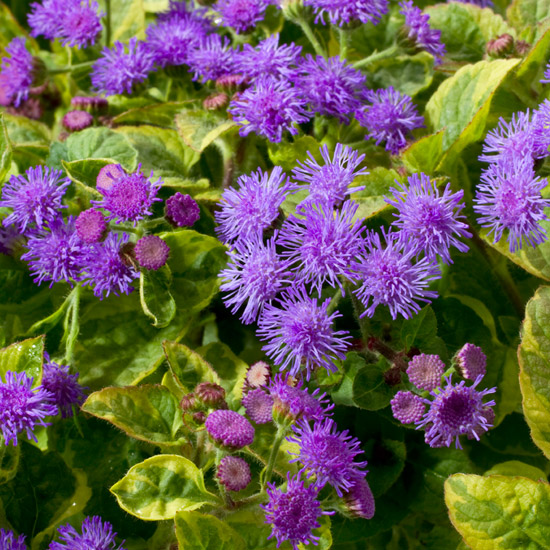
Related article: Perennials for Cutting
Copyright © www.100flowers.win Botanic Garden All Rights Reserved